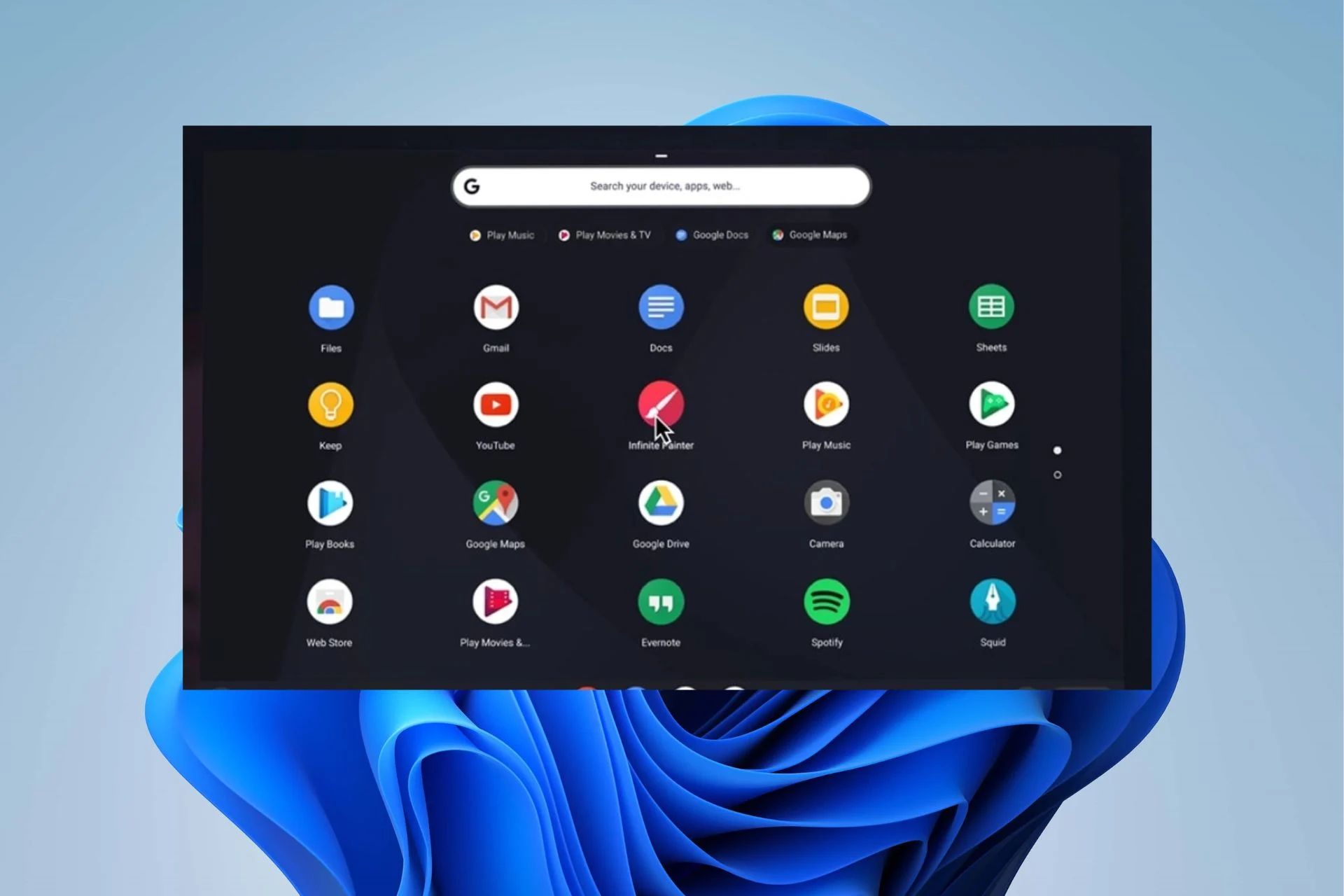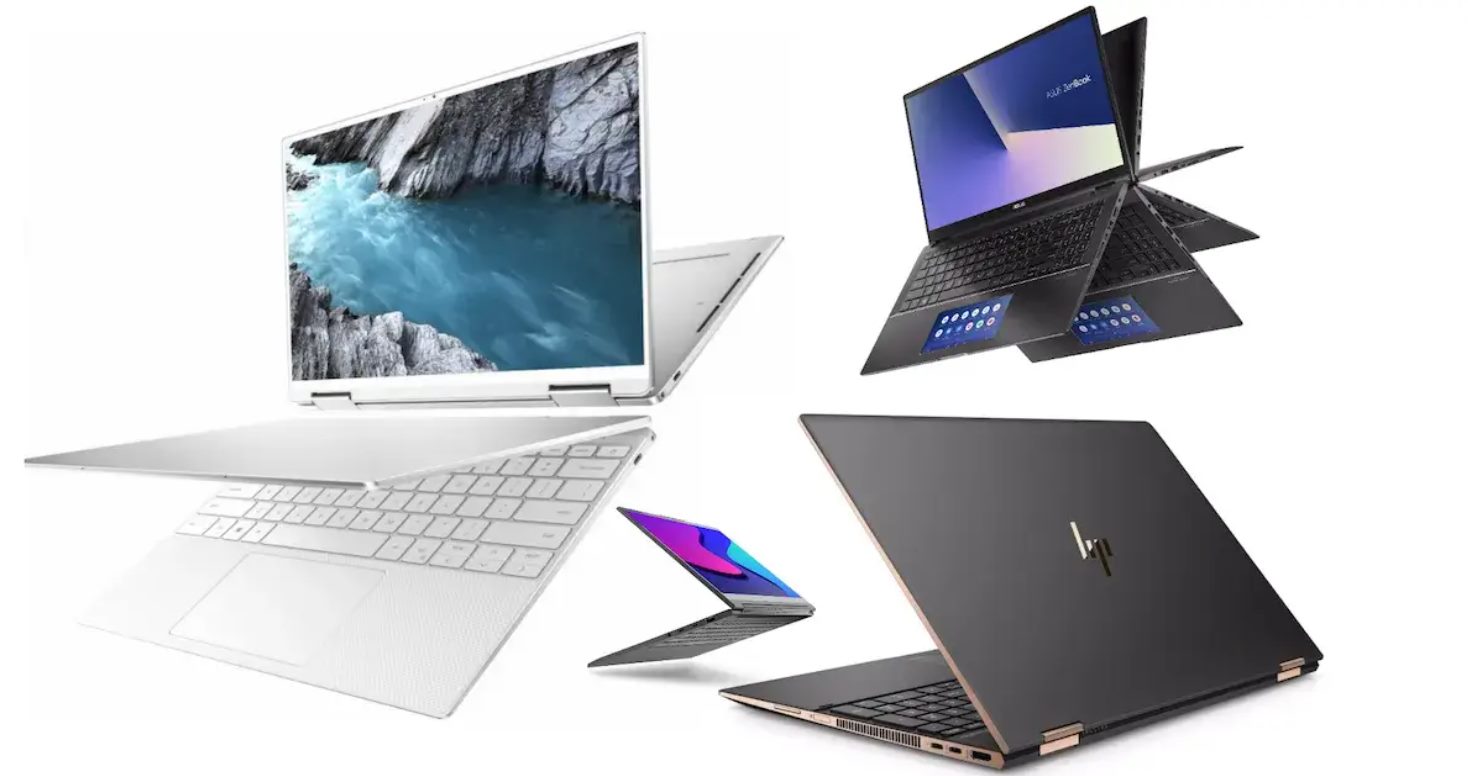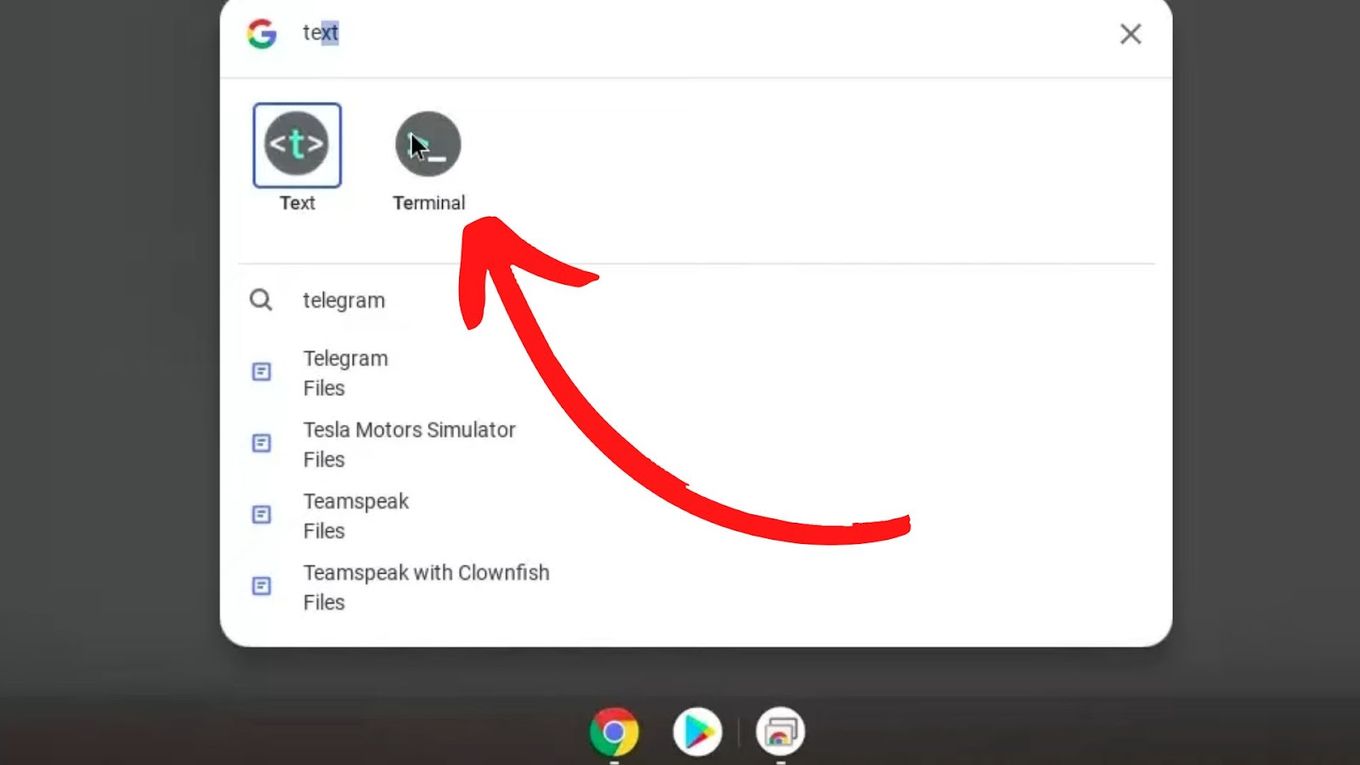Introduction
When it comes to operating systems, there's a diverse landscape to explore. From the ubiquitous Windows and macOS to the open-source Linux distributions, each operating system brings its own set of features and functionalities to the table. However, in recent years, Chrome OS has emerged as a compelling contender in the operating system arena, offering a unique approach to computing that sets it apart from its counterparts.
Chrome OS, developed by tech giant Google, is built on the Linux kernel and designed to work primarily with web applications and online storage. Unlike traditional operating systems that rely heavily on local storage and software installations, Chrome OS leverages the power of the cloud, enabling users to access their files and applications from anywhere with an internet connection.
As the name suggests, Chrome OS is closely intertwined with Google's Chrome browser, serving as a platform for web-centric computing. This means that a significant portion of the user experience revolves around web browsing and web-based applications, making it an ideal choice for individuals who primarily use their computers for internet-related tasks.
In addition to its cloud-centric approach, Chrome OS is known for its lightweight and streamlined nature. It boots up quickly, updates seamlessly in the background, and provides a hassle-free computing experience for users who prioritize simplicity and efficiency.
In this article, we'll delve into the key aspects that differentiate Chrome OS from other operating systems, shedding light on its user interface, file management capabilities, app support, security and privacy features, as well as its performance and system requirements. By understanding these distinctions, you'll gain valuable insights into the unique attributes that make Chrome OS a compelling option in the ever-evolving landscape of operating systems.
User Interface
The user interface of an operating system plays a pivotal role in shaping the overall computing experience. In the case of Chrome OS, the user interface is designed with simplicity and accessibility in mind. Upon booting up a Chromebook, the user is greeted with a clean and uncluttered desktop, featuring a taskbar at the bottom and a system tray in the lower-right corner. The taskbar, also known as the shelf, provides quick access to frequently used applications, as well as the system menu, enabling users to navigate through various settings and features effortlessly.
One of the defining elements of the Chrome OS user interface is the app launcher, which can be accessed by clicking on the circular icon located in the bottom-left corner of the screen. This intuitive feature allows users to search for and launch applications with ease, enhancing productivity and convenience. Additionally, the app launcher showcases a collection of installed web apps and Android apps, providing a unified platform for accessing a wide range of software.
Furthermore, Chrome OS emphasizes the integration of web-based applications, which are accessed through the Chrome browser. This approach aligns with the platform's cloud-centric nature, enabling users to leverage the power of web applications for various tasks, such as document editing, email management, and multimedia consumption. The user interface seamlessly accommodates these web applications, fostering a cohesive and streamlined user experience.
In terms of multitasking, Chrome OS offers a straightforward and efficient interface for managing open windows and applications. Users can easily create multiple browser windows and arrange them on the screen, facilitating seamless multitasking without overwhelming the desktop environment. The ability to create virtual desktops further enhances productivity, allowing users to organize their workflow across different desktop spaces.
The user interface of Chrome OS embodies a minimalist and user-friendly design philosophy, catering to both casual and productivity-focused users. Its emphasis on web-centric computing, coupled with a clean and intuitive interface, positions Chrome OS as a compelling choice for individuals seeking a straightforward and efficient computing environment.
Overall, the user interface of Chrome OS reflects a harmonious blend of simplicity, accessibility, and productivity, underscoring its unique approach to operating system design. Whether navigating through applications, managing windows, or accessing web-based tools, the user interface of Chrome OS is tailored to deliver a seamless and intuitive computing experience.
File Management
File management is a fundamental aspect of any operating system, and Chrome OS offers a streamlined and efficient approach to organizing, accessing, and storing files. At the core of Chrome OS's file management system is the Files app, which serves as a central hub for managing local and cloud-based files.
Upon launching the Files app, users are presented with a clean and intuitive interface that facilitates seamless navigation and organization of files and folders. The app features a familiar directory structure, allowing users to create folders, rename files, and perform basic file management tasks with ease. Additionally, the Files app provides quick access to essential locations such as Downloads, Google Drive, and external storage devices, enabling users to effortlessly locate and interact with their files.
One of the standout features of Chrome OS's file management is its deep integration with Google Drive, Google's cloud storage service. Files stored in Google Drive are seamlessly accessible through the Files app, blurring the distinction between local and cloud-based storage. This integration empowers users to access their files from any device with an internet connection, promoting flexibility and accessibility.
Furthermore, Chrome OS leverages the concept of sandboxing to ensure a secure and reliable file management experience. Each application runs within its own sandboxed environment, preventing potential conflicts and enhancing the overall stability of the system. This approach extends to file management, where users can interact with files in a secure and isolated manner, mitigating the risk of unintended modifications or data loss.
In addition to traditional file management capabilities, Chrome OS introduces the concept of "per-app file access," allowing applications to interact with specific files and folders in a controlled manner. This granular approach to file access enhances security and privacy, empowering users to manage their data with confidence.
Moreover, Chrome OS seamlessly integrates with Android apps, expanding the platform's file management capabilities. Users can leverage a wide range of Android file management apps to complement the native file management features of Chrome OS, further enriching the overall file management experience.
Overall, Chrome OS's file management system embodies a user-centric and cloud-centric approach, emphasizing simplicity, security, and seamless integration with cloud services. Whether organizing local files, accessing cloud-based storage, or leveraging Android apps for file management, Chrome OS offers a cohesive and efficient file management experience that aligns with the platform's overarching principles of accessibility and reliability.
App Support
App support is a critical aspect of any operating system, shaping the range of software and tools available to users. In the context of Chrome OS, app support reflects the platform's evolution and expansion, catering to diverse user needs and preferences.
Chrome OS initially gained attention for its emphasis on web-based applications, aligning with its cloud-centric nature. The Chrome Web Store serves as a hub for a wide array of web apps, ranging from productivity tools to entertainment applications. This web-centric approach positions Chrome OS as an ideal platform for users who rely heavily on web-based software for their day-to-day tasks.
In addition to web apps, Chrome OS has significantly expanded its app support by introducing compatibility with Android applications. This integration, facilitated by the Google Play Store, has broadened the software ecosystem available to Chrome OS users, offering access to a vast catalog of Android apps designed for various purposes. From productivity and creativity tools to games and multimedia applications, the availability of Android apps enriches the versatility of Chrome OS, catering to a broader spectrum of user preferences.
Furthermore, the introduction of Linux app support has further elevated the capabilities of Chrome OS, enabling users to leverage a wide range of Linux applications for development, programming, and specialized tasks. This expansion into the Linux ecosystem underscores Chrome OS's commitment to accommodating diverse user needs, empowering developers, enthusiasts, and professionals with access to a rich repository of Linux software.
The seamless integration of web, Android, and Linux apps within the Chrome OS ecosystem fosters a cohesive and versatile software environment. Users can effortlessly explore and install applications from different sources, tailoring their computing experience to align with their specific requirements and interests. This convergence of app support reflects Chrome OS's adaptability and responsiveness to the evolving landscape of software, positioning it as a dynamic and inclusive platform for users across various domains.
In summary, Chrome OS's app support embodies a multi-faceted approach, encompassing web, Android, and Linux applications to meet the diverse needs of users. The platform's commitment to expanding its software ecosystem underscores its adaptability and responsiveness, empowering users with a rich selection of applications to enhance their productivity, creativity, and entertainment experiences.
Security and Privacy
Security and privacy are paramount considerations in the realm of operating systems, and Chrome OS distinguishes itself through a robust and proactive approach to safeguarding user data and maintaining a secure computing environment.
One of the foundational elements of Chrome OS's security architecture is its built-in protection against malware and viruses. The platform employs a multi-layered defense strategy, including sandboxing, verified boot, and automatic updates, to mitigate the risk of malicious software compromising the system. Sandboxing isolates applications from one another, preventing potential security breaches from spreading across the system. Verified boot ensures that the operating system has not been tampered with, enhancing the integrity of the system's boot process. Additionally, Chrome OS seamlessly updates in the background, ensuring that users are consistently equipped with the latest security patches and enhancements.
Furthermore, Chrome OS incorporates encryption as a fundamental component of its security framework. User data is encrypted by default, both in transit and at rest, bolstering the confidentiality and integrity of sensitive information. This encryption extends to files stored locally and in the cloud, reinforcing the platform's commitment to preserving user privacy and data security.
In the realm of user privacy, Chrome OS prioritizes transparency and user control. The platform provides granular privacy settings, empowering users to manage their preferences related to data collection, usage, and personalized experiences. Users have the autonomy to customize their privacy settings, including permissions for applications and extensions, location access, and browsing history management, fostering a privacy-conscious computing environment.
Moreover, Chrome OS integrates robust identity and access management features, enhancing user authentication and authorization mechanisms. The platform leverages strong authentication protocols, such as two-factor authentication and biometric recognition, to fortify user identity verification and access control. This proactive approach to identity and access management reinforces the platform's resilience against unauthorized access and identity-related threats.
In summary, Chrome OS's commitment to security and privacy encompasses a comprehensive suite of protective measures, encryption protocols, privacy controls, and identity management mechanisms. By prioritizing user data protection and privacy empowerment, Chrome OS establishes itself as a trustworthy and secure operating system, catering to the evolving needs of users in an increasingly interconnected digital landscape.
Performance and System Requirements
Performance and system requirements are pivotal considerations for any operating system, influencing the overall user experience and the hardware compatibility landscape. Chrome OS distinguishes itself through its lightweight and efficient performance characteristics, catering to a diverse range of hardware configurations while delivering a seamless and responsive computing experience.
At the core of Chrome OS's performance attributes is its minimalistic footprint and resource-efficient design. The platform is engineered to operate optimally on modest hardware specifications, making it an ideal choice for devices with limited processing power and memory. This inherent efficiency enables Chrome OS to deliver swift boot times, responsive application launches, and smooth multitasking capabilities, even on entry-level hardware configurations.
Moreover, Chrome OS's streamlined architecture and cloud-centric approach contribute to its exceptional performance profile. By offloading a significant portion of computing tasks to the cloud, Chrome OS minimizes the strain on local hardware resources, resulting in enhanced system responsiveness and reduced reliance on high-end hardware components. This cloud-centric paradigm empowers Chrome OS to deliver consistent performance across a spectrum of devices, ranging from budget-friendly Chromebooks to high-end Chromeboxes.
In terms of system requirements, Chrome OS's versatility shines through its compatibility with a wide array of hardware configurations. From budget-friendly Chromebooks powered by entry-level processors and modest memory capacities to premium Chromebooks equipped with powerful processors and ample memory, Chrome OS seamlessly adapts to diverse hardware environments, ensuring a consistent and optimized user experience across the spectrum.
Furthermore, Chrome OS's efficient utilization of system resources extends to its seamless integration with Android applications. The platform's ability to run Android apps natively enhances its versatility, allowing users to leverage a vast ecosystem of software without compromising performance. This integration further underscores Chrome OS's adaptability and responsiveness to evolving user needs and software trends.
In summary, Chrome OS's performance and system requirements underscore its commitment to delivering a streamlined, efficient, and versatile computing experience. By prioritizing performance optimization and hardware compatibility, Chrome OS empowers users to embrace a diverse range of devices while enjoying a consistent and responsive computing environment.
Conclusion
In conclusion, Chrome OS stands out as a distinctive and compelling operating system, offering a blend of innovative features, user-centric design, and a cloud-centric approach that sets it apart from traditional operating systems. The platform's user interface embodies simplicity, accessibility, and productivity, catering to a wide spectrum of users who prioritize a streamlined and intuitive computing experience. With its emphasis on web-centric computing and seamless integration of web, Android, and Linux applications, Chrome OS delivers a versatile software ecosystem that adapts to diverse user needs and preferences.
Chrome OS's file management capabilities reflect a user-friendly and secure approach, leveraging deep integration with Google Drive and a robust security framework to ensure reliable data organization and protection. The platform's commitment to security and privacy is evident through its multi-layered defense strategy, encryption protocols, privacy controls, and identity management mechanisms, fostering a trustworthy and privacy-conscious computing environment.
Furthermore, Chrome OS's performance and system requirements underscore its efficiency, adaptability, and versatility, making it an ideal choice for a wide range of hardware configurations. The platform's lightweight footprint, cloud-centric paradigm, and seamless integration with Android applications contribute to its exceptional performance profile, delivering a consistent and responsive computing experience across diverse devices.
Overall, Chrome OS's unique attributes, including its user interface, file management capabilities, app support, security and privacy features, as well as its performance and system requirements, position it as a dynamic and inclusive operating system that resonates with users seeking a modern, efficient, and secure computing environment. As the digital landscape continues to evolve, Chrome OS remains at the forefront of innovation, empowering users with a cohesive and versatile platform that adapts to their evolving needs and preferences.

























